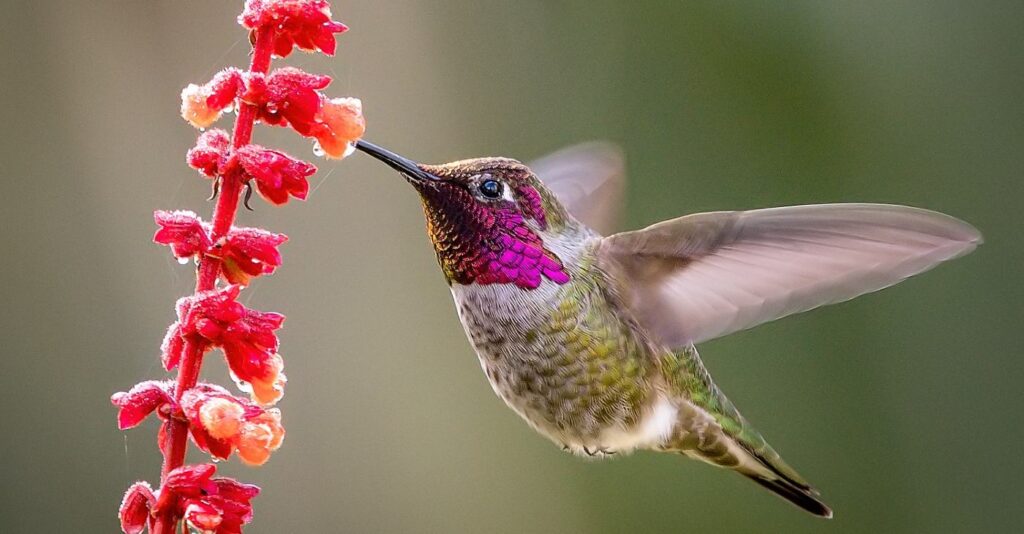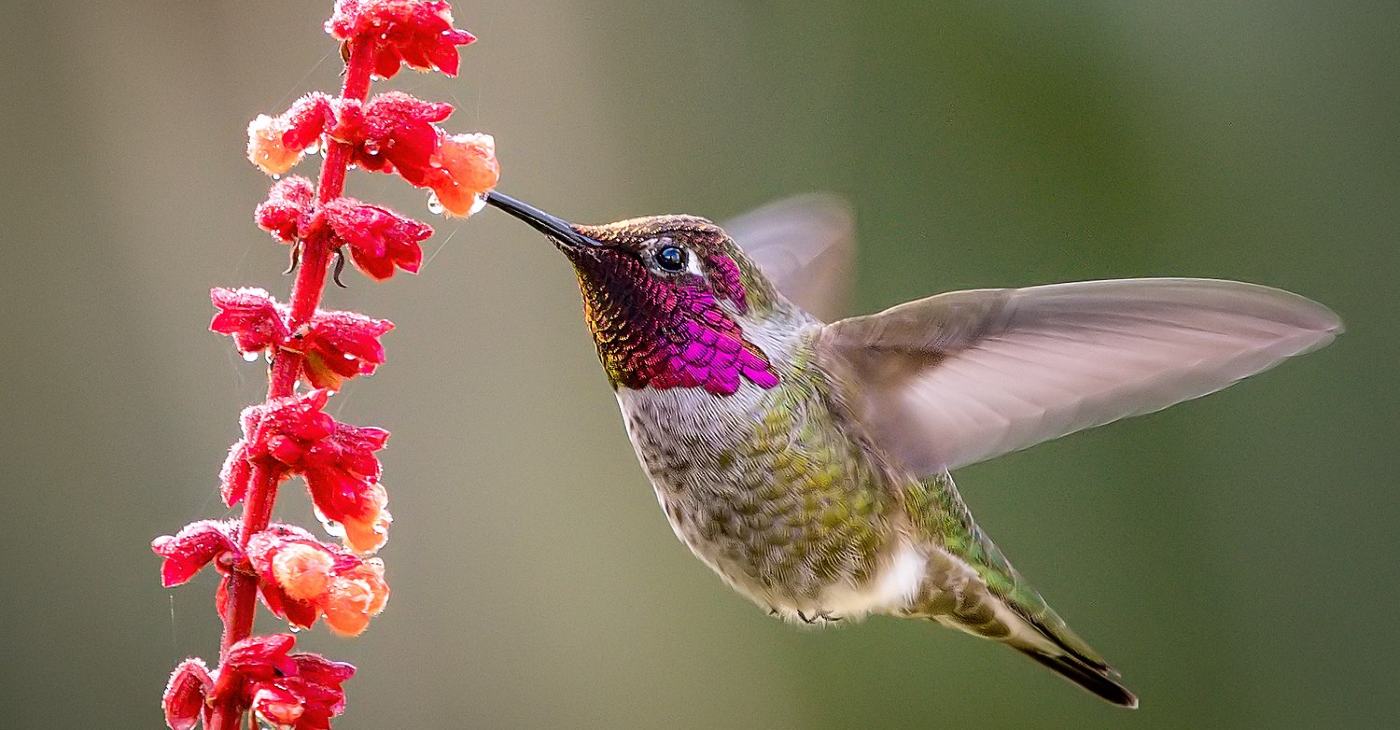
The hummingbird is named after its pleasant humming sound when it hovers in front of flowers to feed. But only now has it become clear how the wing generates the hummingbird’s namesake sound when it is beating rapidly at 40 beats per second.
Researchers from Eindhoven University of Technology, Stanford University, and Sorama meticulously observed hummingbirds using 12 high-speed cameras, six pressure plates, and 2,176 microphones. The team of engineers succeeded in measuring the precise origin of the sound generated by the flapping wings of a flying animal for the first time.
They discovered that the soft and complex feathered wings of hummingbirds generate sound in a fashion similar to how the simpler wings of insect do. The new insights could help make devices like fans and drones quieter.
The hummingbird’s hum originates from the pressure difference between the topside and underside of the wings, which changes both in magnitude and orientation as the wings flap back and forth. These pressure differences over the wing are essential, because they furnish the net aerodynamic force that enables the hummingbird bird to liftoff and hover.
Unlike other species of birds, a hummingbird wing generates a strong upward aerodynamic force during both the downward and upward wing stroke, so twice per wingbeat. Whereas both pressure differences due to the lift and drag force acting on the wing contribute, it turns out that the upward lifting pressure difference is the primary source of the hum.
The difference between whining, humming, and wooshing
Professor David Lentink of Stanford University said, “This is the reason why birds and insects make different sounds. Mosquitoes whine, bees buzz, hummingbirds hum, and larger birds ‘woosh’. Most birds are relatively quiet because they generate most of the lift only once during the wingbeat at the downstroke. Hummingbirds and insects are noisier because they do so twice per wingbeat.”
To arrive at their model, the scientists examined six Anna’s hummingbirds, the most common species around Stanford.
One by one, they had the birds drink sugar water from a fake flower in a special flight chamber. Around the chamber, not visible to the bird, cameras, microphones, and pressure sensors were set up to precisely record each wingbeat while hovering in front of the flower.
RELATED: Watching This Hummingbird Mama With Her Newborns is Just What We Needed
During a follow-up experiment, six highly sensitive pressure plates finally managed to record the lift and drag forces generated by the wings as they moved up and down, a first.
The researchers finally managed to condense all their various results in a simple 3D acoustic model, borrowed from the world of airplanes and mathematically adapted to flapping wings. It predicts the sound that flapping wings radiate, not only the hum of the hummingbird, but also the woosh of other birds and bats, the buzzing and whining of insects, and even the noise that robots with flapping wings generate.
Making drones quieter?
Although it was not the focus of this study—published in March in the journal eLife—the knowledge gained may also help improve aircraft and drone rotors as well as laptop and vacuum cleaner fans. The new insights and tools can help make engineered devices that generate complex forces like animals do quieter.
This is exactly what Sorama aims to do: “We make sound visible in order to make appliances quieter. Noise pollution is becoming an ever-greater problem. And a decibel meter alone is not going to solve that. You need to know where the sound comes from and how it is produced, in order to be able to eliminate it. That’s what our sound cameras are for. This hummingbird wing research gives us a completely new and very accurate model as a starting point, so we can do our work even better,” concludes CEO and researcher Rick Scholte of Sorama, a spin-off of Eindhoven University of Technology.
CHECK OUT: Being Around Birds Makes Us Much Happier Says New Science
If the movements of hummingbirds can give us quieter technology in the future? Well, we are absolutely here for it.
(WATCH the researchers’ video all about how hummingbirds hum)
Source: Eindhoven University of Technology
FLY This Fascinating Research Over to Your Pals…




















